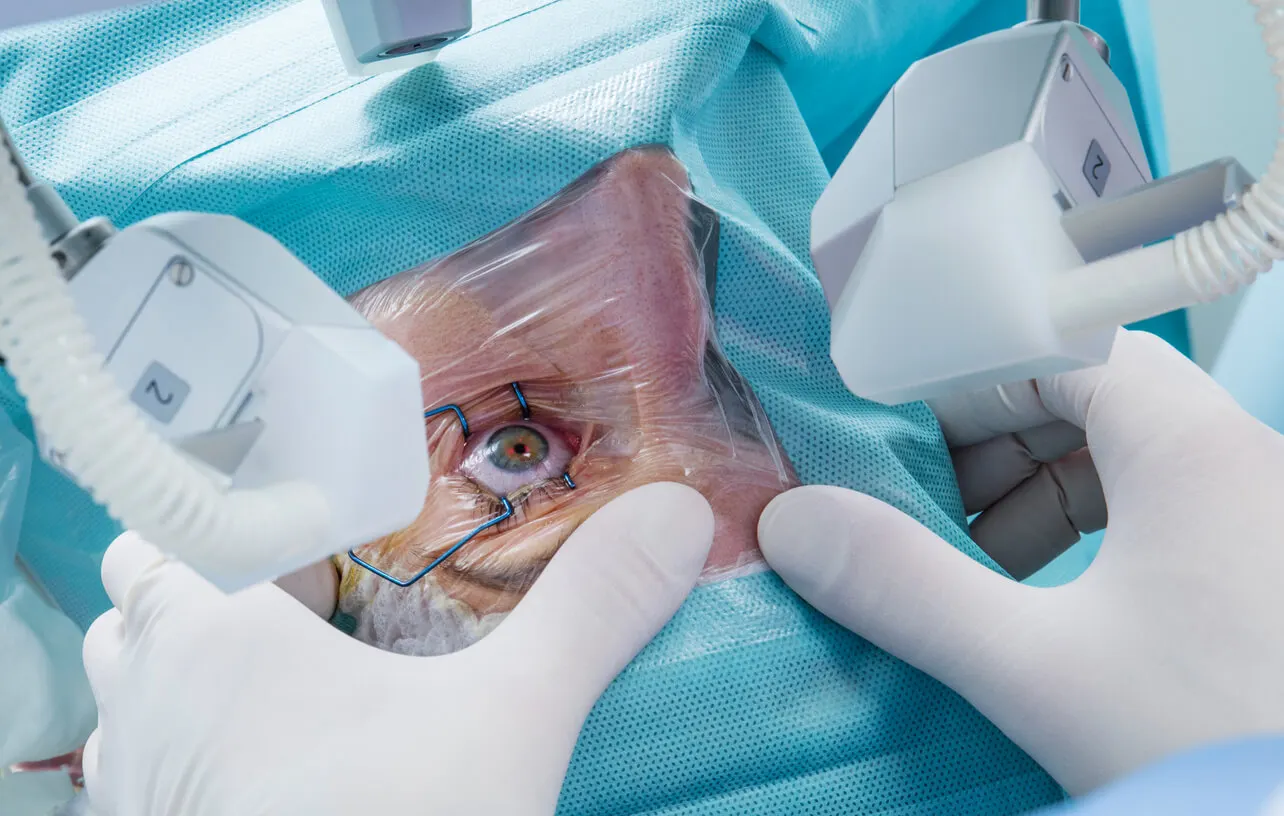Aniridia or Absence of the Iris: Why Does it Occur?

Aniridia is a rare pathology characterized by the total or partial absence of the iris. The iris is the diaphragm that surrounds the pupil and gives color to the eyes. Its basic function is to regulate the amount of light entering the eye.
It’s estimated that aniridia affects 1 in 100,000 people. Sometimes there’s no iris at all, sometimes it’s incipient.
You could say that an eye without an iris is like a window without curtains, and light enters indiscriminately.
What is aniridia?
Aniridia is an eye disorder characterized by an incomplete development of the iris. It usually affects both eyes. The absence of the iris can be total or partial, but, in both cases, it causes significant visual disturbances.
Although aniridia refers only to the absence of the iris, it’s common for other parts of the eye to be affected when this condition occurs. It’s commonly accompanied by corneal degeneration, lens dislocation, cataracts, glaucoma, nystagmus, strabismus or optic nerve atrophy.
In most cases, the disease is present from birth. It’s almost always due to an inherited genetic mutation. It’s considered a chronic pathology, but there are treatments to moderate its effects and even correct the problem.
Read more here: Fight Eye Infections with One of These 9 Remedies
Symptoms
Aniridia can be detected from the first days of life. It’s recognized, in principle, because the newborn baby prefers to be in the dark and closes their eyes to light stimuli. The disease leads to a significant decrease in vision and also to other ocular pathologies.
The usual symptoms of aniridia are as follows:
- Low vision
- Glare
- Photophobia
The most characteristic aspect is the presence of a larger than normal pupil, which is usually irregularly shaped. There’s also decreased visual acuity, with associated defects such as nearsightedness, farsightedness, or astigmatism.
Also, there may be amblyopia or decreased vision due to lack of retinal sensitivity. Glaucoma is also present in up to half of the cases of aniridia. And it isn’t uncommon for the pathology to cause cataracts.

Causes
The direct cause is usually a mutation of the PAX-6 gene, which is located on chromosome 11. This is responsible for the formation of the eyeball during early gestation.
Although the most obvious manifestation is the complete or partial absence of the iris, the mutation in this gene often causes abnormalities in other parts of the eye. About one-third of patients have sporadic aniridia; that is, the mutation occurs spontaneously and isn’t inherited.
The disease has an autosomal dominant pattern of inheritance. A person with aniridia has a 50% chance of transmitting this pathology to direct descendants.
There’s no way to prevent the pathology.
In rare cases, aniridia is related to other systemic diseases, such as Wilms’ tumor. It may also be the result of trauma to the eye.
You may also be interested in: 7 Strange Facts about Your Pupils
Diagnosis of aniridia
Diagnosis of aniridia is simple. It’s sufficient to observe the size and shape of the pupils to detect the partial or total absence of the iris. This can be seen with the naked eye, without the need for any extra tests.
However, it’s important to perform some tests to determine the severity of the anomaly. In some cases, it may be confused with another condition called iris coloboma.
For this reason, the following tests are usually requested:
- Fluorescent in situ hybridization (FISH)
- Chromosomal banding
- Abdominal and brain imaging
- Renal ultrasound
Treatment of aniridia, absence of the iris
So far, there’s no specific treatment for aniridia. The usual approach is to have a separate approach for each of the associated anomalies. That is, one for glaucoma, another for cataracts, etc.
During childhood, there’s the possibility of early visual stimulation. This helps to develop the maximum possible visual potential and to avoid motor problems.
It’s common for many patients to wear cosmetic contact lenses. These are a partial solution that help to overcome photophobia and solve the problem of the abnormal appearance of the eyes.
If the defect is partial, it’s possible for it to be corrected with microsurgery. This allows the reconstruction of the iris and pupil. If the defect is very severe, in some cases it’s possible to implant the eye to form a complete iris.

Prognosis
The prognosis of aniridia is very varied, as it depends on the severity and characteristics of each case. Sometimes, it’s possible to make an almost total correction of the problem, while in other opportunities this is impossible.
For the same reason, the treatment must be individualized. The doctor in charge is the ophthalmologist, who will not only seek to improve or repair the condition, but also to prevent possible complications.
All cited sources were thoroughly reviewed by our team to ensure their quality, reliability, currency, and validity. The bibliography of this article was considered reliable and of academic or scientific accuracy.
- Morrison, D. A., FitzPatrick, D. R., & Fleck, B. W. (2000). Iris Coloboma With Iris Heterochromia. Archives of ophthalmology, 118(11), 1590-1591.
- Pituello, F., Yamada, G., & Gruss, P. (1995). Activin A inhibits Pax-6 expression and perturbs cell differentiation in the developing spinal cord in vitro. Proceedings of the National Academy of Sciences, 92(15), 6952-6956.
- Hingorani, M., Hanson, I., & Van Heyningen, V. (2012). Aniridia. European Journal of Human Genetics, 20(10), 1011-1017.
This text is provided for informational purposes only and does not replace consultation with a professional. If in doubt, consult your specialist.








